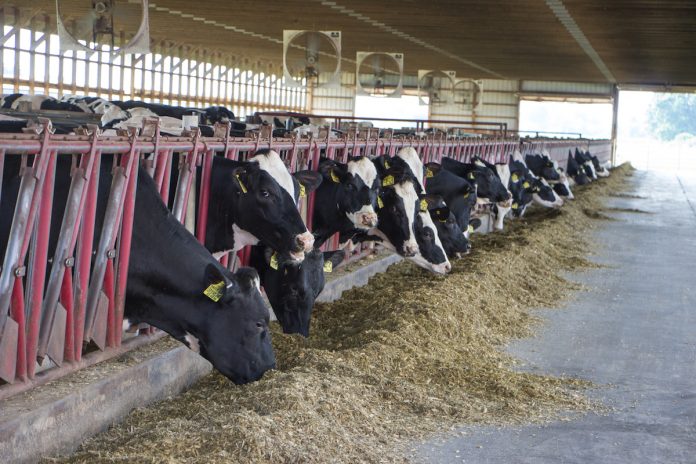Feed costs account for a significant percentage of the expenses of operating a dairy farm.
The second measure in The Ohio State University Dairy Excel 15 Measures of Dairy Farm Competitiveness bulletin discusses controlling feed costs, including calculating feed costs per hundred weight of milk sold and income over feed costs.
Feed costs per cwt of milk sold and income over feed costs (IOFC) can be quite variable from year to year among farms. Market and management influences and which animal groups are included in the calculation can cause variability.
Calculations based on different animal groups can include:
- Total feed costs per cwt of milk sold (includes lactating and dry cows and heifers of all ages)
- Feed costs per cwt of milk sold for lactating cows (lactating cows only used because they generate the revenue)
- Feed costs per cwt of milk sold for lactating and dry cows (sometimes used because heifers are raised off the farm)
- IOFC is typically calculated for lactating cows only
When calculating this measure, use feed costs available at this site: https://dairy.osu.edu/resources/financial-management. The goal for this measure is to be in the top 25% (low feed cost or high IOFC). If herd replacements are custom raised, feed costs per cwt of milk sold should be about 30% lower than when costs for all animals are included.
Feed cost per cwt of milk sold
The total feed costs per cwt of milk sold is a measure of the effectiveness of management in controlling the largest cost item in producing milk.
This accounts for all feed provided to the lactating cows, dry cows, and heifers since the sale of milk is the primary revenue stream for paying for all feed expenses.
Generally, 65% of the feed costs for a dairy herd that raises its own replacements will be for the lactating cows, 30% for heifers, and 5% for dry cows.
We suggest using the market value for homegrown feeds fed to livestock if you do not know your actual cost of production.
If you find you are not meeting your feed cost goals, consider these actions:
- Produce or purchase quality forages for all animals.
- Use grouping strategies and feed diets based on animal needs.
- Balance rations for all animals.
- Keep crop production input costs low.
- Reduce feed losses from storage, during mixing and delivery, and feed bunk refusals.
- Keep purchased feed costs low.
- Minimize per acre crop production expenses.
- Feed for high production if cows have genetic ability.
- Keep dry periods between 45 and 60 days.
- Keep non-dairy culling below 25% and death rate below 5%.
- Maintain age at first calving between 22 and 24 months.
- Eliminate causes of low milk production.
Income Over Feed Costs (IOFC)
Actual IOFC is calculated based on yield of milk, milk fat and protein composition, and the price of milk and its components. Feed costs should include the value of homegrown feeds and the purchased feeds provided only to the lactating cows.
If your IOFC is low relative to the benchmark:
- Evaluate feed costs to determine if cost reduction is available with homegrown feeds or whether you should continue growing feeds.
- Routinely evaluate and adjust diets.
- Are dry matter intakes actual or estimated?
- Do you know your feed efficiency?
- Is milk income too low relative to current market potential?
If your IOFC is high relative to the benchmark, this is generally positive, assuming the numbers used are accurate.
Areas to review include:
- How are homegrown feeds priced?
- Were costs of feed refusals and shrinkage included in total feed costs?
- Check body condition of all cows in the herd.
- Monitor IOFC yearly














